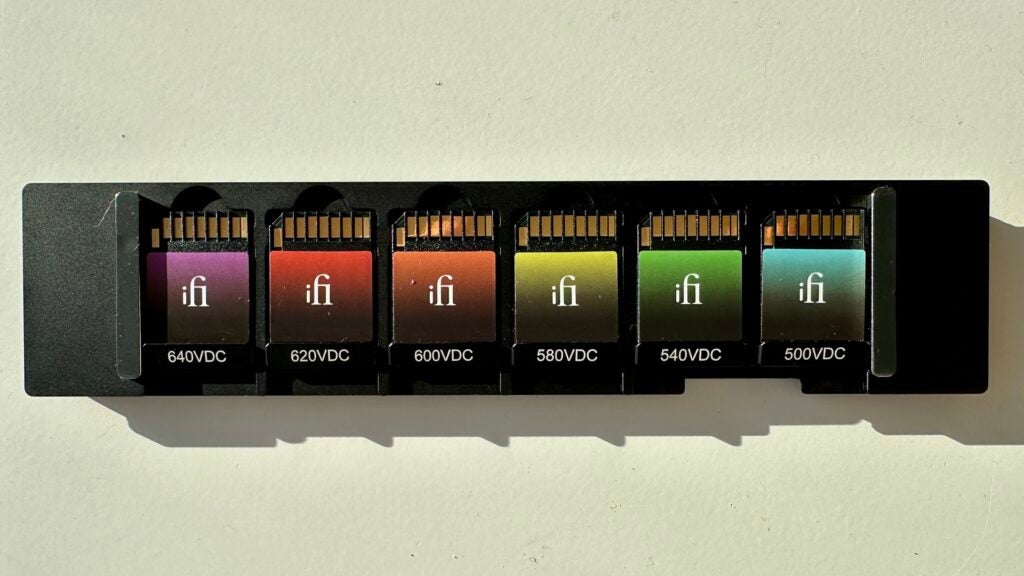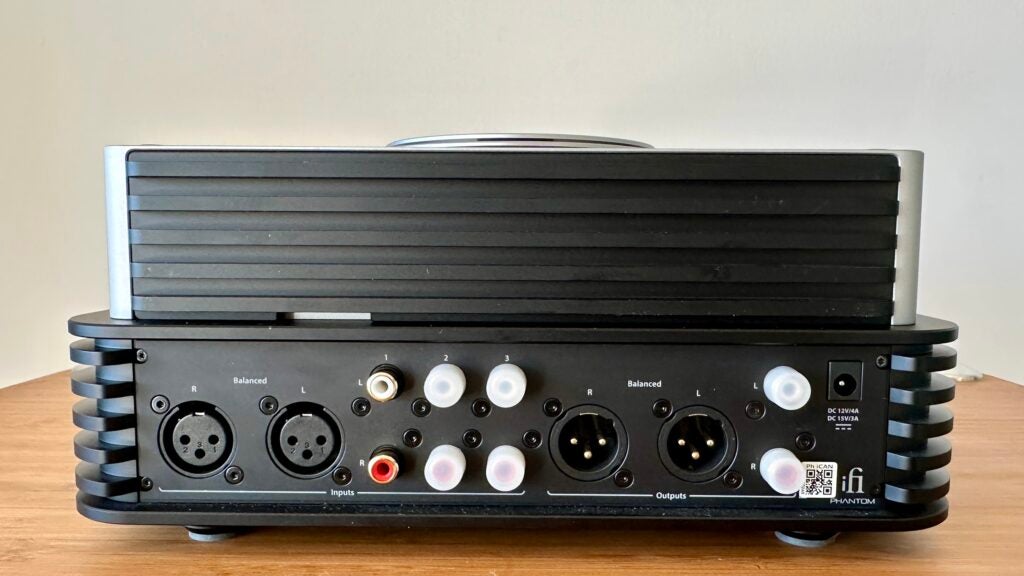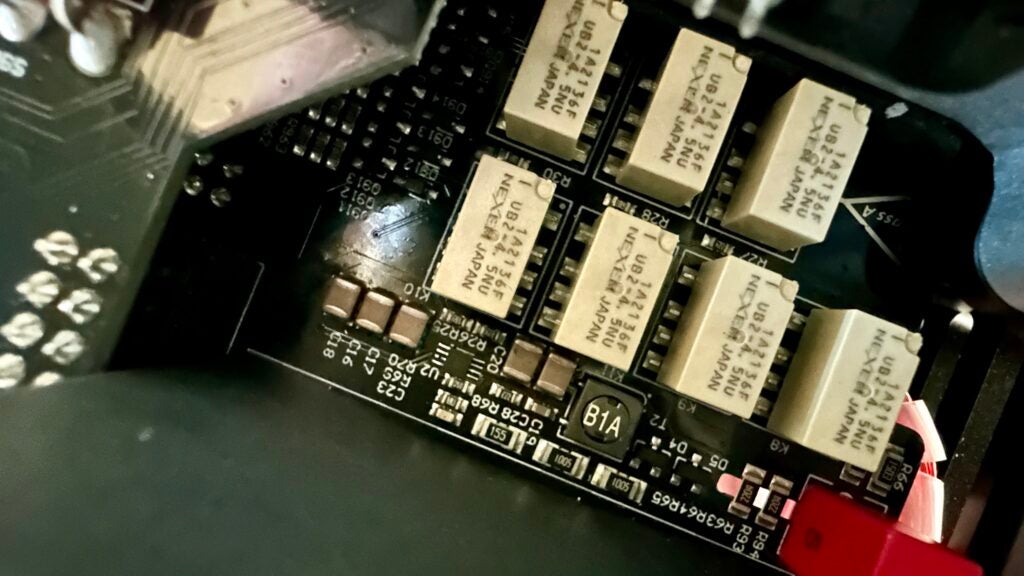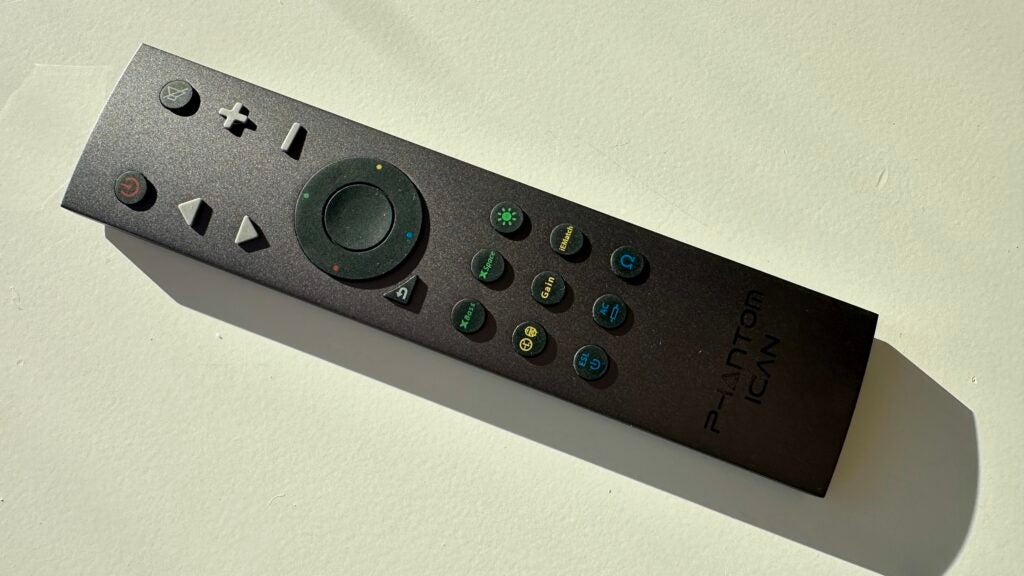iFi iCAN Phantom Review
If anyone iCAN, iFi iCAN






Verdict
Ignore the looks and concentrate on the performance – because the looks are incoherent, but the sound is as coherent as it comes.
Pros
- Extraordinarily faithful and accomplished sound
- Extensive compatibility
- Uncompromised specification
Cons
- Challenging aesthetics
- Control app is a work in progress
- Not cheap
Key Features
- Headphone amplifierThe iCAN Phantom acts as a headphone amp and can double up as a pre-amplifier
- Two input stagesCan switch between valve-based and solid-state input stages in real-time
- XBass Analogue circuit that can improve bass response
Introduction
Taking headphone amplification duties away from, say, a smartphone or a laptop and getting a dedicated product to do it properly isn’t all that novel an idea.
What is rather more novel is the idea of spending the thick end of four grand on a headphone amplifier that’s able to deal with any and every pair of headphones you can think of – but never let it be said that iFi isn’t an intrepid company. So if you take your headphone listening very seriously indeed, read on…
Availability
The iFi iCAN Phantom headphone amplifier/preamplifier is on sale now, and in the United Kingdom it costs a not inconsiderable £3749. In the United States it’ll set you back $3749, while in Australia you’re looking at AU$5999.
At the risk of stating the bleeding obvious, this is serious money for a headphone amplifier. The iFi iCAN Phantom is going to need to be pretty special to justify that asking price…
Design
- Two distinct tiers
- 185 x 256 x 120mm (HxWxD)
- Weighs 4.2kg
By the standards of headphone amplifiers, the iFi iCAN Phantom is both quite large and quite heavy. Mind you, when you consider that it’s a refinement of iFi’s Pro iCAN headphone amplifier, one that incorporates a lot of the technology from the company’s Pro iESL (a stand-alone electrostatic headphone ‘energiser’) it’s hardly surprising.

What’s slightly more surprising is the way the iCAN Phantom looks. Heaven knows my opinion on design and aesthetic doesn’t count for much – but we can agree the appearance is a bit gawky? The iCAN Phantom looks like a collision between two separate pieces of equipment, or perhaps a single product that at some point has had a loft extension.
It doesn’t help that the bottom section (the ground floor) is matte black and features quite pronounced fins to help with heat dissipation, while the top section (the loft extension) is smaller and silver.
Looking individual is all well and good, but it’s possible to be too individual sometimes. At least, that’s how it seems to me.
Features
- Numerous input and output options
- Valve and solid-state amplification
- Several control options (not all successful)
All the Phantom’s inputs and outputs are positioned in the lower portion of the chassis, and they’re spread across the front and rear panels.
Up front, there are a couple of 5-pin connections for use with electrostatic headphones. One is at normal bias, while the other is customisable – the bias voltage of electrostatic headphones can vary quite a lot, so if yours are anything but the normal 230V iFi provides a selection of bias voltage data cards.

These look a lot like SD cards, and offer bias voltages of 500V, 540V, 580V, 620V and 640V – they’re housed in a little magnetic panel that attaches to the rear of the upper section of the Phantom and are presented rather like expensive chocolates. There’s a slot beneath the custom 5-pin connection into which your appropriate data card can slide.
The rest of the lower front panel features standard outputs. There are two 6.3mm unbalanced sockets (one is positive phase, the other inverted phase), a 3.5mm unbalanced output (featuring iFi’s S-Balanced technology in a drive for minimal distortion), a pair of balanced 3-pin XLRs (left and right channels), a single 4-pin balanced XLR, and a 4.4mm balanced output.

It seems safe to say that no matter how esoteric your electromagnetic, dynamic driver or planar magnetic headphones or IEMs, you should have no trouble connecting them to the iCAN Phantom.
The rear of the lower portion has a selection of analogue inputs (three pairs of stereo RCAs, and a pair of balanced XLRs). There’s a pair of balanced XLRs and a pair of stereo RCA pre-outs for use with power amplifiers or powered speakers.
The front of the silver-coloured first floor is dominated by two quite large knobs, one either side of a circular display in the centre. One control is for ‘power on/off’ and input selection, the other takes care of volume. There are also a couple of little switches here: one is for adjusting gain (0dB, 9dB or 18dB) and the other toggles between power modes.
As regards power modes, it’s important to remember the Phantom has two discrete input stages – one is solid state, the other is valve-based. Switching between them is as simple as pushing the little control, and you have three options that each have very specific sonic characteristics (or so says iFi).

Solid state mode, says the company, majors on “pace and immediacy” of sound, while the first of the valve modes (tube) is more about “fluidity and a free-breathing dynamic quality” and the second (tube+) is the more valve-y and can create “spellbinding romantic warmth”. Who among us doesn’t fancy a bit of that? Exactly.
The valves themselves are GE5670s, and they ought to have a working life of around 10000 hours. They’re visible, along with some of the other hardware, through the Phantom’s smoked glass top panel. The panel is easily removable when the time eventually comes to replace the valves.
Further control comes in the form of five little switches across the top lip of the lower portion of the Phantom. They are in charge of bias voltage, allow you to toggle through different impedance settings, switch IEM matching on or off, and scroll through the various intensities of the XBass and XSpace algorithms that will be familiar to owners of pretty much any piece of iFi hardware.

You’ve a couple of options when it comes to taking charge of all this – beyond the physical controls I’ve already discussed, I mean. The iCAN Phantom ships with a remote-control handset that feels a cut above the norm – it features quite big buttons and rather too many colours, and so is ideal for accompanying a product as, um, individual as the Phantom.
Or there’s iFi’s Nexis control app – it’s free for iOS and Android, and for now it’s supposed to function as a super remote control, displaying diagnostic information and facilitating access to firmware updates and what-have-you. Further down the line the company intends to expand its functionality to the point it’s in charge of a whole iFi ecosystem – but as of right now, it’s not all that keen to even pair with the iCAN Phantom. It’s early days in its development, though…

Sound Quality
- Detailed, expansive and convincing sound
- Remarkably balanced and dynamic
- Complete authority over headphones of all kinds
It would be quite something, wouldn’t it, if we’d come this far only to discover this extraordinarily expensive headphone amplifier wasn’t much cop to listen to? Wouldn’t that be a story?
Well, today is not that day. The iFi iCAN Phantom is an extraordinarily accomplished headphone amplifier, with an absolute stack of talents just waiting to make your favourite headphones, and your favourite music, sound as fresh as the very first time you heard them/it.
It doesn’t matter if you use electrostatic, or planar magnetic, or dynamic driver headphones. It doesn’t matter the type of music you like to listen to, or when it was recorded. It doesn’t even matter all that much which of the power modes you deploy (there are differences between them, sure, but nowhere near as pronounced or dramatic as the iFi literature makes it seem). In each and every circumstance, the Phantom is an uncomplicated delight to listen to.

A vinyl copy of Push the Sky Away by Nick Cave & The Bad Seeds makes the iFi’s case in casually spectacular fashion – in every respect, it’s a thrillingly complete listen. Detail retrieval is remarkable – no occurrence in the recording is too minor or too fleeting to escape the Phantom’s attention, and having identified it the iFi has no problem giving it precisely the weight and emphasis it needs to be put into proper context.
And where tonality is concerned, the Phantom is beautifully balanced – from the top of the frequency range to the bottom, it’s poised and naturalistic, unwilling to add to or subtract from the tone of the recording itself.
Dynamic headroom is considerable in the way a jumbo jet is considerable, so the headline quiet/LOUD stuff is fully expressed. The more minor dynamic variations in harmonics are given just the right amount of emphasis too. And where the bottom of the frequency range is concerned, the Phantom hits with well-controlled vigour, keeping momentum high and giving a realistic interpretation of rhythms and tempos.

Where soundstaging is concerned, the iFi is approaching masterful. It creates a deep, wide stage on which performers can do their thing with more than enough elbow-room to keep them locked securely into an individual pocket or area. But at the same time, it unifies every individual strand of a recording into a singular entity – this facility with timing is hard to come by no matter how much money you’ve spent on your audio equipment.
And if you listen to recordings of a solo instrument or an unaccompanied voice, the immediacy and positivity of the Phantom’s presentation is enough to bring a lump to the throat of even the hardest-hearted listener.
In short, then, the iFi iCAN Phantom is a stunningly accomplished headphone amplifier, one that will steal your time away every time you turn it on.
Latest deals
Should you buy it?
You have an extensive collection of very good headphones
They’ll sound better than ever if you attach them to this particular headphone amplifier.
You care about looks as much as sound
It’s not shallow of you to want your expensive headphone amp to look more like an amp and less like a car-crash.
Final Thoughts
I won’t pretend I wasn’t concerned when I first took the iCAN Phantom from its packaging – a combination of oddball looks and deeply involved functionality is seldom an encouragement. But having listened to numerous recordings, using numerous headphones, I’m confident I’d want one even if it looked like it had been involved in a fire.
How we test
We test every DAC/headphone amplifier we review thoroughly over an extended period of time. We use industry-standard tests to compare features properly. We’ll always tell you what we find. We never, ever, accept money to review a product.
Find out more about how we test in our ethics policy
Tested for several days
Tested with real world use
FAQs
According to iFi Audio, the valves in the iCAN Phantom can last for 10,000 hours.








